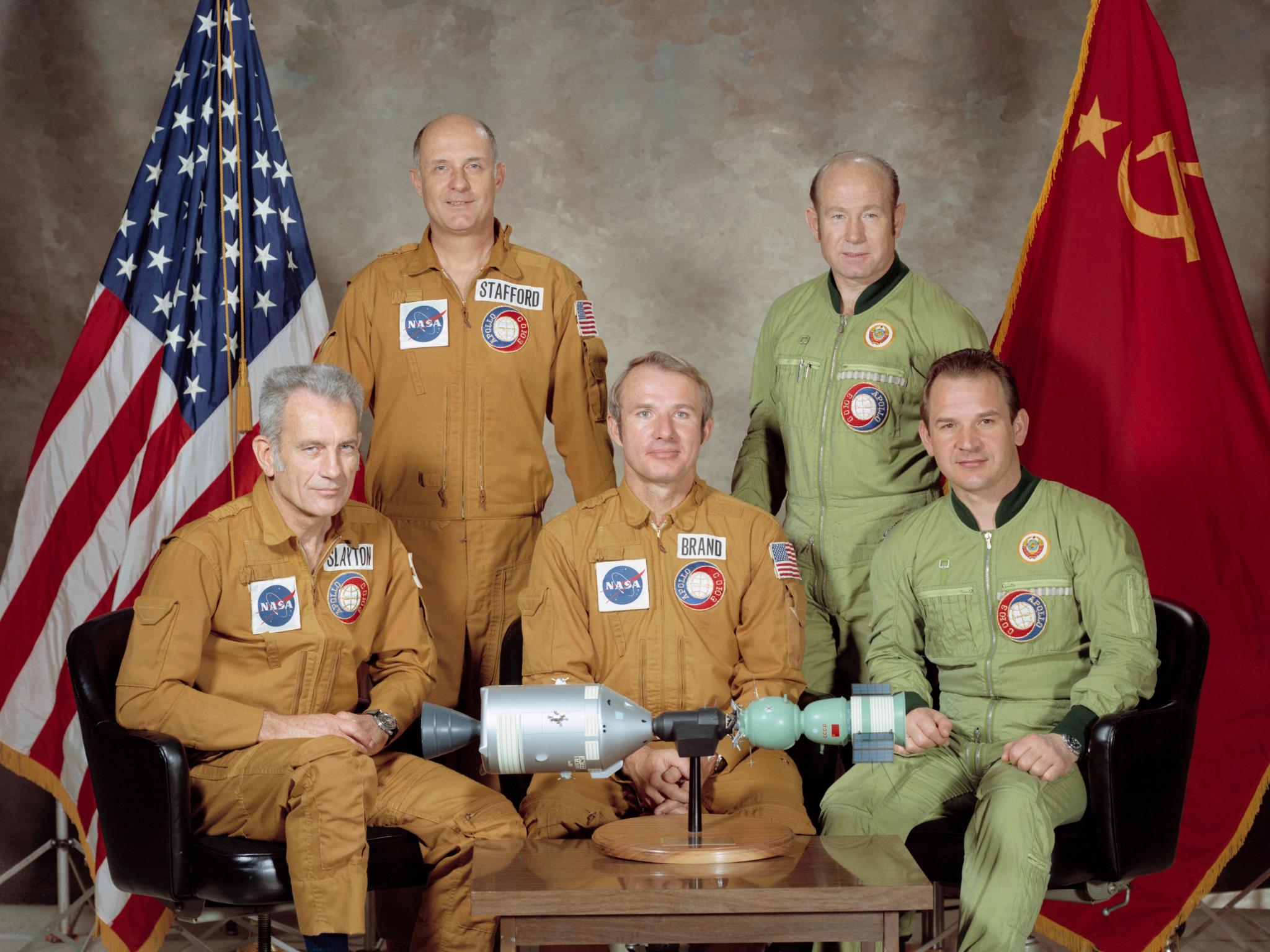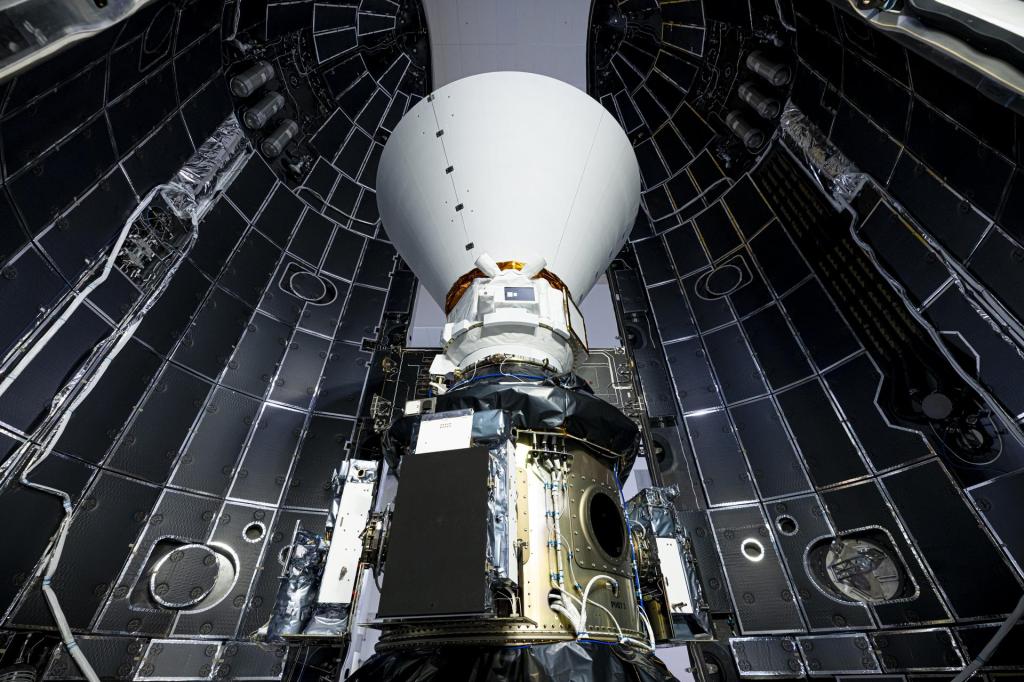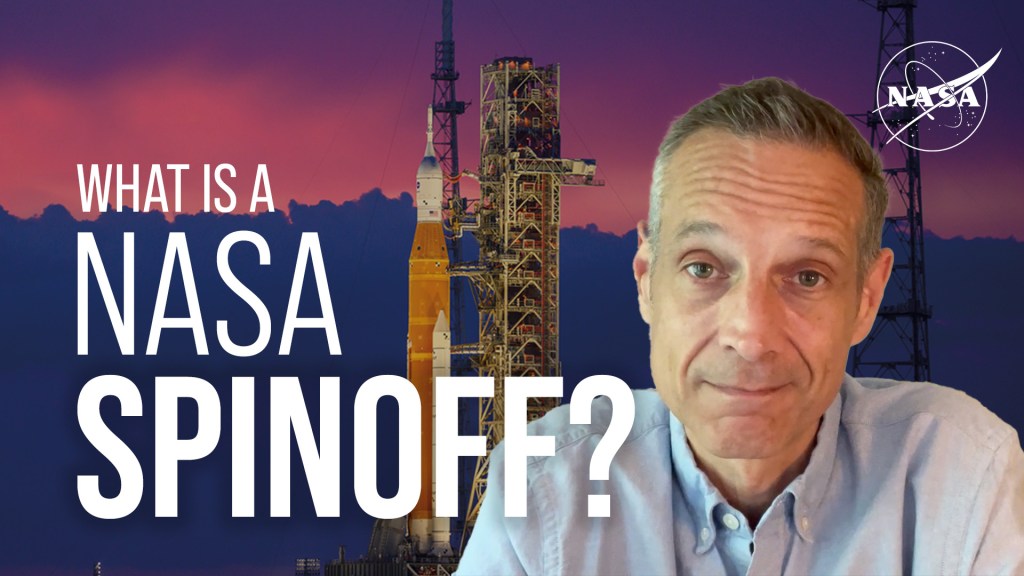
The first international partnership in space wasn’t the International Space Station. It wasn’t even the Shuttle-Mir series of missions. It was the Apollo-Soyuz Test Project, the first international human spaceflight. On July 15, 1975, an Apollo spacecraft launched carrying a crew of three and docked two days later on July 17, with a Soyuz spacecraft and its crew of two.
Designed to test the compatibility of rendezvous and docking systems and the possibility of an international space rescue, the nine-day Apollo-Soyuz mission brought together two former spaceflight rivals: the United States and the Soviet Union.
The United States launched an Apollo command and service module on a Saturn IB rocket. The Apollo spacecraft, while nearly identical to the type that orbited the moon and later carried astronauts to Skylab, was modified to provide for experiments, extra propellant tanks and the addition of controls and equipment related to the docking module.
The Soyuz was the primary Soviet spacecraft used for manned flight since its introduction in 1967. The docking module was designed and constructed by NASA to serve as an airlock and transfer corridor between the two craft.
During nearly two days of joint activities, the mission’s two Soviet cosmonauts and three U.S. astronauts carried out five joint experiments and exchanged commemorative items.
The successful Apollo-Soyuz Test Project paved the way for future international partnerships.



























